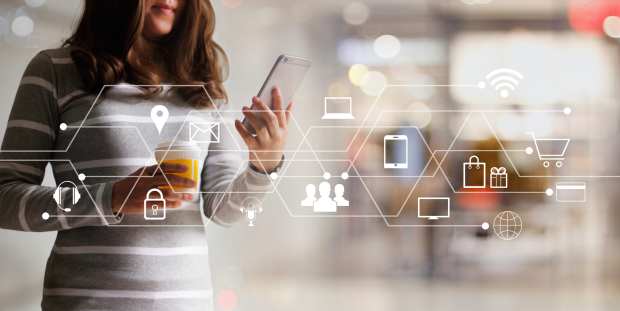As Year Winds Down, Retailers Get Ready For 5G Revolution

The 5G mobile network technology revolution is on, and you can bet that retail will be one of the places where this all plays out.
As the debut of 5G devices supercharges demand, Apple Inc. expects iPhone sales to return to growth next year. The company reportedly aims to ship over 200 million handsets next year after putting forward more than four new iPhone models with the possible inclusion of 4G models, 5G models and a successor to the budget iPhone SE device, Bloomberg reported, citing an unnamed source.
New Entry
But the lineup is not set in stone, and the tech company’s plans might shift per the unnamed source. And GF Securities Analyst Jeff Pu said a broader handset lineup would help iPhone shipments grow next year. “The new entry level iPhone SE2 will help iPhone shipments see double-digit year-to-year growth in the first half,” Pu said. “The combination of a lower-cost 4G phone and premium 5G handsets in the second half will help Apple appeal to both cost-sensitive users and high-spending customers.”
As it stands, smartphone makers ranging from Huawei Technologies Co. to Samsung Electronics Co. have put devices that are 5G-capable on the market.
They are betting that the emergence of the latest generation of wireless technology will power innovation from smart homes to automated factories. However, Apple decided to bring the technology to the iPhone next fall, in part, to make sure that global networks can foster a true 5G user experience. The Nikkei recently reported that the firm is telling suppliers it foresees shipping 80 million iPhones at a minimum with 5G wireless modems next year.
Visual Commerce
The new 5G mobile network technology promises to give retailers more power to deploy leading-edge technology, and that includes efforts related to visual commerce tools.
“Retailers like to vaunt their forays into augmented and virtual reality, but current 4G connectivity isn’t fast enough to scale these capabilities to all mobile users,” is how one recent analysis put it. “Many AR experiments are still considered proof of concept, but standardizing 5G will undoubtedly accelerate the mainstreaming of connected retail.”
The focus of a good deal of those augmented reality (AR) efforts will no doubt come down to the omnichannel experience — that is, augmenting, if you will, the in-store experience for digital- and mobile-minded consumers.
“Above all, in-store AR adds a visual context to the purchasing experience,” the analysis said. “A customer can hover their smartphone over a product and see product information such as ingredients, ratings and instructions projected onto their screen.”
A glimpse of that future comes from Target. According to Mobile-Ar.Reality.News, the chain “has been on a bit of an augmented reality advertising shopping spree via Snapchat lately. The latest example, revealed on earlier in October, comes via a pair of Halloween-themed experiences, available in the camera carousel in Snapchat.” As the report notes, this AR advertising effort follows a similar push on Snapchat over the summer, “a shopping mini-game that challenged users to catch home goods and seasonal products in their cart by tilting their heads.”
The example from Target stands as only the latest AR push in the area of commerce. News recently emerged that Apple is working with third-party brands to launch augmented reality glasses in the first half of 2020. AR glasses present digital information as if it exists in reality. Microsoft and Google already released their own versions, but they have yet to catch on. Changying Precision will be Apple’s main chassis supplier for the head-mounted AR product, MacRumors reported.
Here’s comes 5G — be ready for its expanding use in retail.
